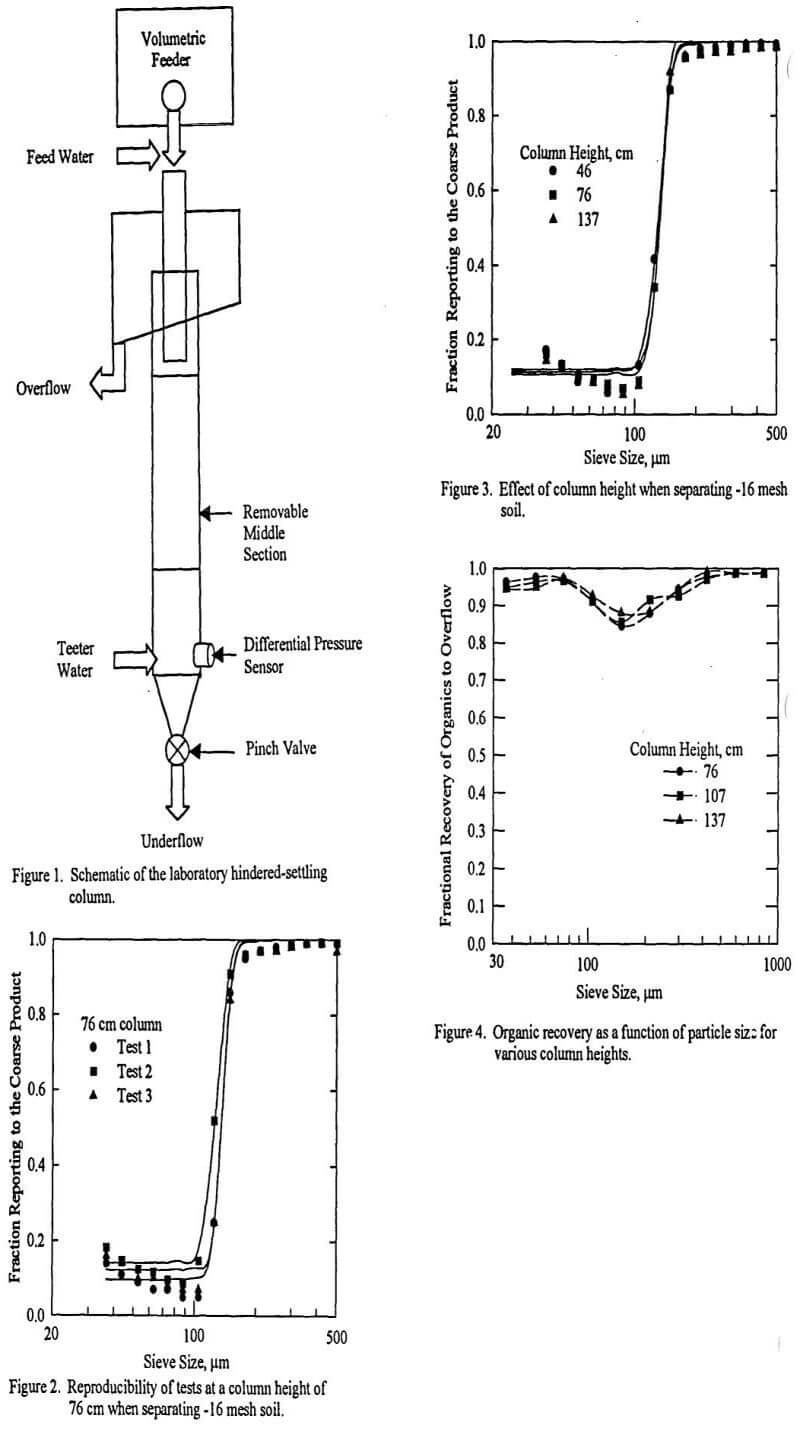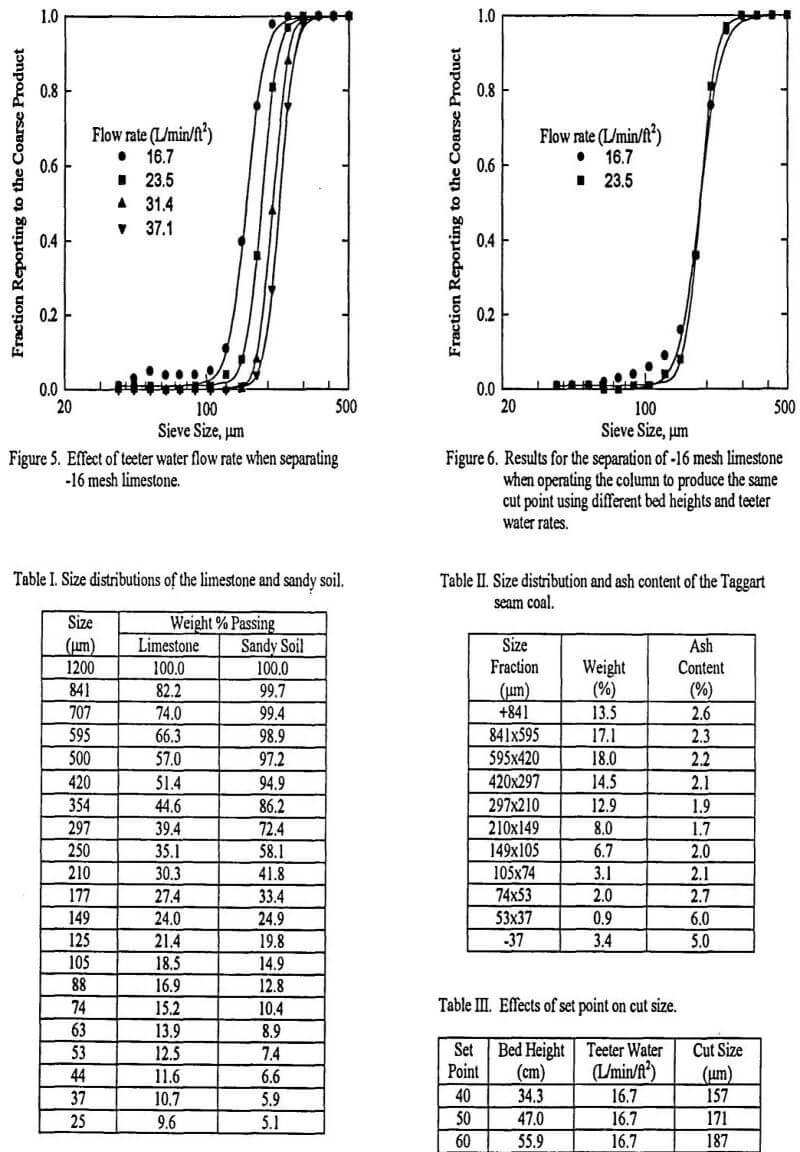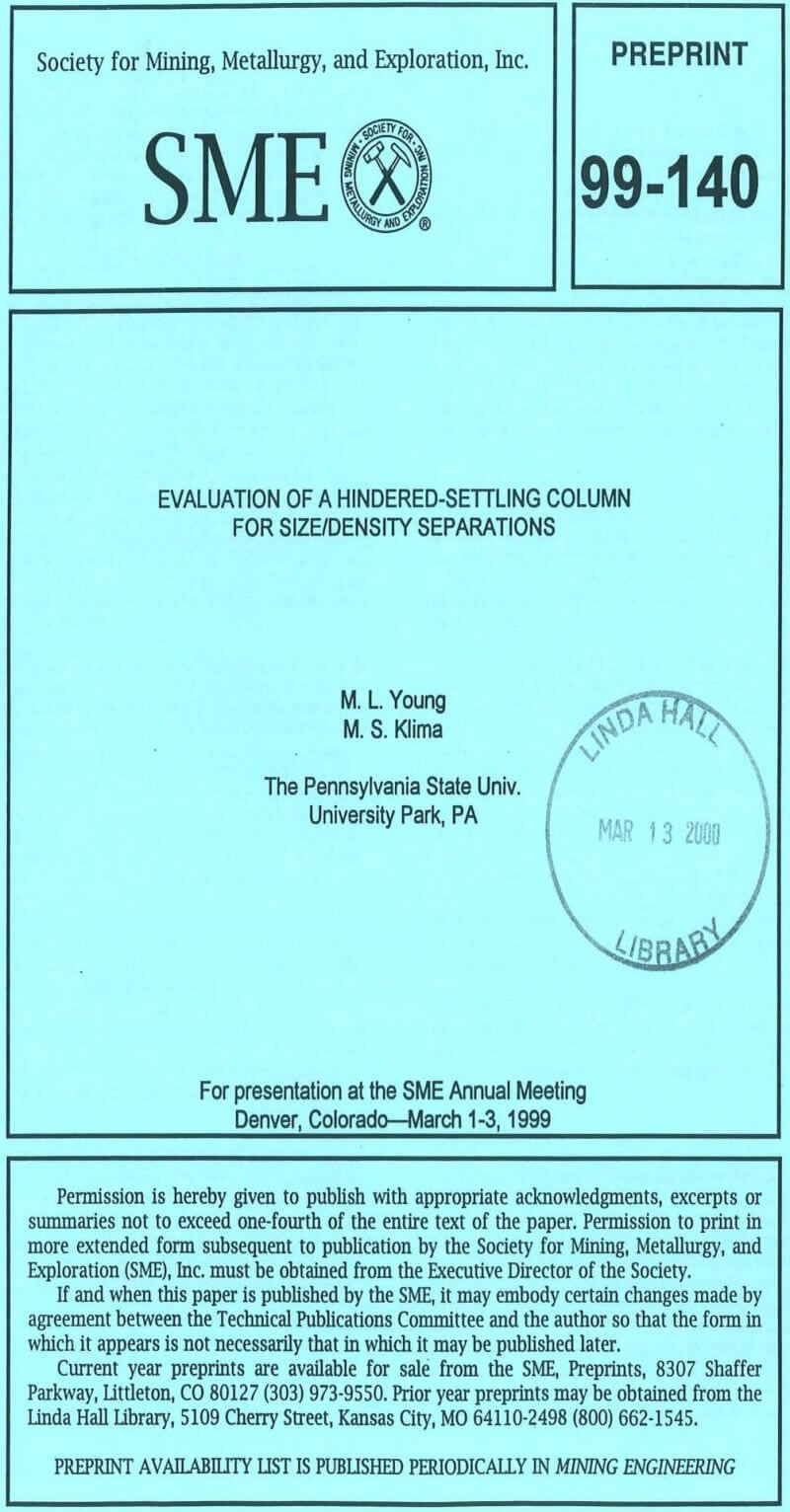Table of Contents
After filling the column with water, the teeter water flow rate was set to produce the desired cut size. The feed water was adjusted to produce a feed slurry consisting of about 50 percent solids by weight The screw-feeder was then set to the desired rate. Solids were fed into the feed tube and combined with the feed water. The set point on the differential pressure sensor was adjusted so that the desired bed height was achieved. After the set point was reached, underflow solids began to discharge. However, to ensure steady-state operation, the column was operated an additional 30 to 60 minutes, depending on column height and feed rate. About 10 times the mean retention time of the column was usually sufficient. After steady-state was achieved, samples of the entire overflow and underflow streams were collected for each test.
Effects of Column Height
Another series of tests was conducted with the hindered-settling column to examine the effects of column height on separator performance. The tests were done at column heights of 46, 76, and 137 cm using the soil. Column height was measured from the midpoint of the pressure sensor to the overflow. The set point was kept constant at 33.3 for each column height. This kept the solids concentration constant within the column. The feed rate was held constant at 410 g/min and the teeter water flowrate was 0.76 L/min (0.2 gal/min). Three tests were done at each column height, and the partition curves for each column height were averaged. The results are shown in Figure 3. Identical separations were obtained for all column heights. The unusual bypass was again present for the natural soil.
The effects of column height were also evaluated for the coal-soil system. These tests simulated a soil washing operation removing low-density organic material from soil. Column heights of 76, 107, and 137 cm were tested. A feed rate of 900 g/min and teeter water flow rate of 0.76 L/min were used in all tests. The set point was kept constant at 33.3. For these tests, separator performance was evaluated based on the fractional recovery of organic material to the overflow. These results are shown in Figure 4. The results show that the separation was not affected by column height and that organic recoveries greater than 90% were achieved in all but a few size fractions. The decrease in recovery for the middle size fractions was likely the result of steady state not being achieved. These tests required longer operation times to allow organic material (coal) that was trapped in the bed to be discharged.
Effects of Operating Parameters
Separate tests were carried out with limestone to examine the effects of teeter water rate and bed height on column performance. The feed rate was kept constant at 1200 g/min for these tests. Figure 5 shows the variation in partition curves with changes in teeter water flow rate for the limestone feed. As expected the curves shifted (i.e., d50 increased) with increasing teeter water, while the shape of the curve remained constant. This indicates that for a given material, d50 alone can describe the separation. Moreover the a-bypass values were zero indicating the effectiveness of the hindered-settling column for removing non-agglomerated fines.
Increasing the bed height can also be used to increase the cut size (Table III). In this case the teeter water flow rate was held constant Figure 6 gives an example of approximately the same separation done with significantly different teeter water flow rates. It can be seen that the separations had nearly the same d50 values and sharpness indexes, with no bypass in either case. This indicates that there is a set point that will produce a given product with a minimum amount of teeter water.



